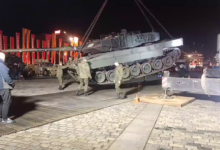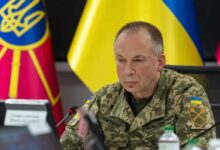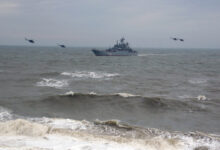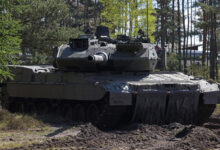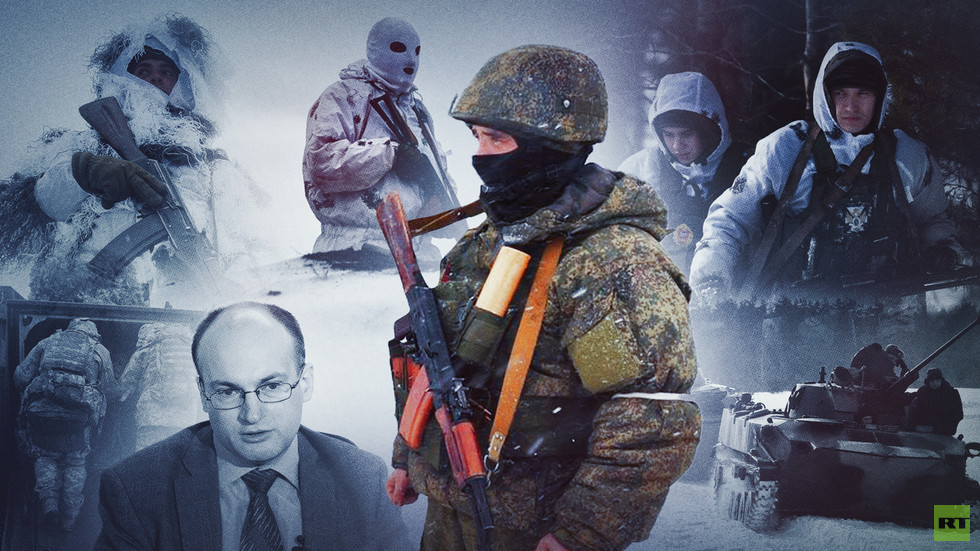
As the fighting approaches its third year, Russia has the upper hand but there is no immediate conclusion on the horizon

© RT / RT
The Armed Forces of Ukraine (AFU) spent the summer trying to advance in Zaporozhye region. The offensive didn’t lead to noticeable positional changes, but the Ukrainian side suffered significant casualties and lost a lot of equipment. As a result, Kiev’s military command claimed that the maneuvers were merely preparations and that the main operation was still ahead.
However, the following months did not bring any success either, and Ukraine’s military and political elites, – as well as its Western backers – have started looking for someone, or somewhere, to place the blame for the failure of the much-hyped counteroffensive. Meanwhile, Russian units have launched an assault on Avdeevka and have already made progress.
Vasily Kashin, a candidate of political science and director of the Center for Comprehensive European and International Studies at the National Research University, Higher School of Economics, spoke about the results of the past year’s military campaign and the conflict’s future prospects.
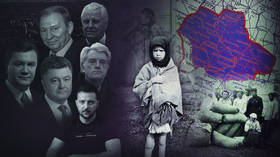
Read more
“Ukraine still has certain resources”
– Throughout the fall, the AFU tried to continue its counteroffensive despite considerable losses and a lack of progress. Why did they decide to do that?
Vasily Kashin: The large-scale counteroffensive was curtailed, but the Ukrainian leadership could not completely stop all combat operations. Likewise, Russian units did not wholly abandon offensive tactics when they faced a crisis in the fall of 2022. Battles continued locally.
This happens because when an army completely abandons offensive tactics, the strategic initiative passes to the enemy, which then redistributes forces between various sections of the front and strikes where no one expects.
So even when it switches to strategic defense, an army will undertake localized offensive operations. That’s the way it always has been.
– Does this mean that for Ukraine’s leadership, political considerations do not outweigh the military ones?
– No, politics retreat into the background here; this is purely military logic. [Ukrainian President] Vladimir Zelensky has already clarified that there will be a transition to strategic defense. He said that a vast fortification system would be constructed along the entire line of contact.
He was supposed to demonstrate at least some achievements during the counteroffensive, but by now, it is evident that he failed at this.
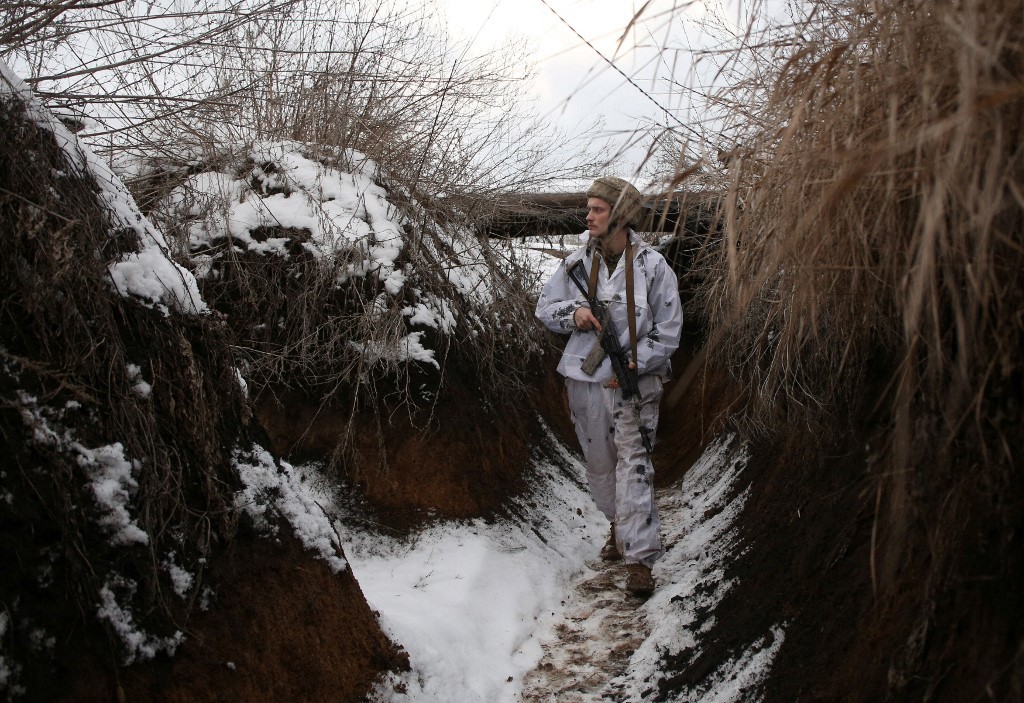
FILE PHOTO: An Ukrainian soldier walks along a snow covered trench on the frontline with the Russia-backed separatists near Verkhnetoretskoye village, in the Donetsk region on January 31, 2022. © Anatolii STEPANOV / AFP
– Can this fortification line be constructed with Ukraine’s current resources?
– I’d say it’s quite realistic because it does not require supplies of materials from Western partners, and local forces can carry out all the work. Of course, there are problems with the labor force – most working-class representatives have already been mobilized. But Ukraine still has certain resources.
If Ukraine secures funding for its current expenses, it can construct the fortifications. The plan can only be disrupted by internal organizational issues.
In general, during the so-called anti-terrorist operation in Donbass, Kiev was able to build a powerful fortification system, which we now have to deal with in places like Avdeevka. And, at that time, the level of military spending in the country was much lower.
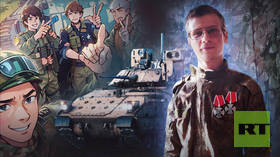
Read more
“The elites start to voice discontent”
– Meanwhile, the consequences of the counteroffensive are evident beyond the battlefield. Several Ukrainian politicians – Ex–Zelensky aide Aleksey Arestovich, for example – have mentioned possibly giving up some territories in return for a peace agreement with Russia. Does the unsuccessful counteroffensive have anything to do with it?
– This is the result of the failed counteroffensive and, on top of it, the onset of the next political cycle in Ukraine. The unity demonstrated by various political forces in the first year and a half of the conflict was entirely unnatural for Ukraine’s political system.
Vladimir Zelensky used the current conflict to amass a level of power that has been unprecedented in post-Soviet Ukraine: He established control over the media, distributed property, made significant personnel changes, and limited the power of the opposition.
But, as time passes, the elites are starting to voice discontent. The problem was hidden below the surface because they thought the war would soon end and its outcome would be positive for Ukraine. But now it has become clear that the war will not end quickly, and its outcome will be deplorable for the country.
A new round of intense political struggle is about to begin in these conditions. We’ve heard about these contradictions before – since the beginning of last summer, in fact – but the sources were rather isolated and unreliable. But now, everything has become evident.
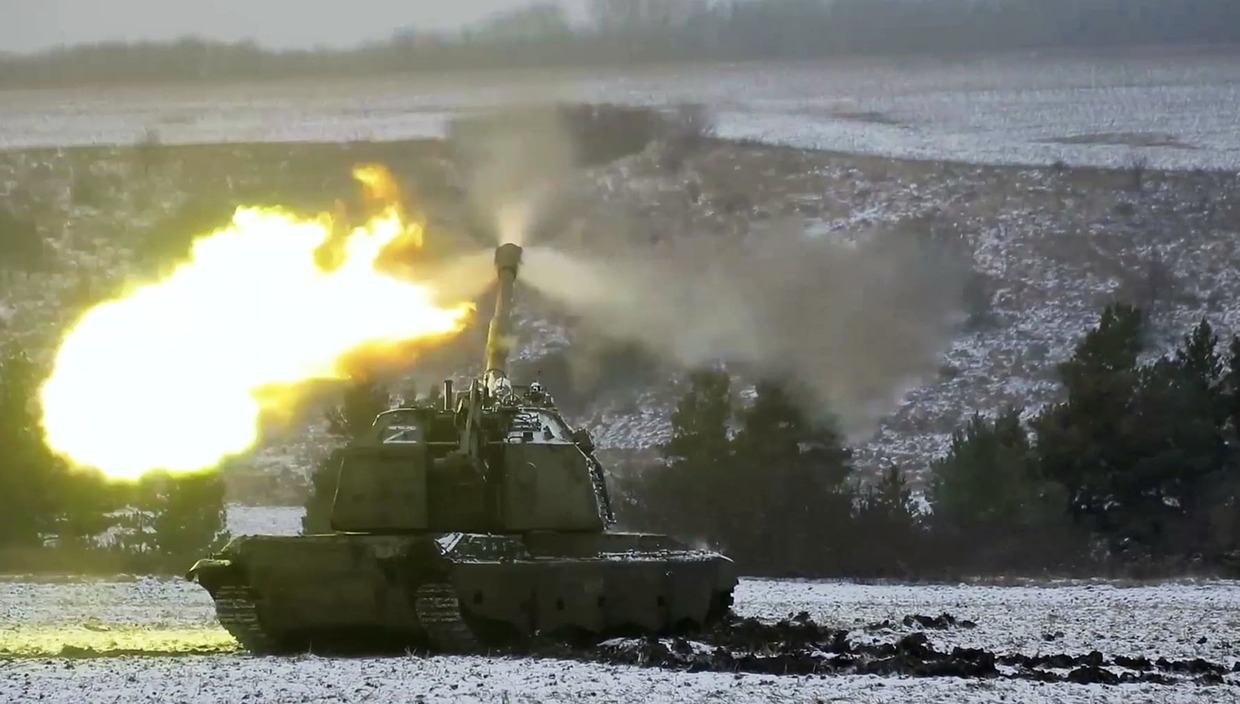
FILE PHOTO: In this handout video grab released by the Russian Defence Ministry, Russian servicemen of the Western Military District fire a 2S33 Msta-SM2 self-propelled howitzer towards positions of Ukrainian armed forces. © Russian Defence Ministry/Sputnik
– What contradictions are we talking about?
– We may recall that in June of last year, during the battle for Severodonetsk, there were rumors of a conflict between the commander-in-chief of the AFU, Valery Zaluzhny, and the president of Ukraine. The genera wanted to withdraw troops from unfavorable positions, but Zelensky insisted on fighting to the end.
Moreover, there were reports that Verkhovna Rada [Ukrainian Parliament] Deputy Mariana Bezuglaya, a critic of the Ukrainian leader, was sent by the president to Severodonetsk as a kind of political commissioner to sort out the situation. This was reported by nationalist-minded journalist Yury Butusov, who was close to [the fifth president of Ukraine] Pyotr Poroshenko.
Over time, these issues receded into the background because in the fall [of 2022], it seemed that Ukraine was doing well (though the situation turned out to be deceptive), but now all these conflicts have surfaced, and we can clearly see them.
Ukraine’s elites were always divided. But at the time, optimism prevailed, and they could hush it up. But now, there are no grounds for optimism, leading to internal conflicts.
Of course, Western countries will try to keep the situation under control, but they are also trying to shift the responsibility onto each other.
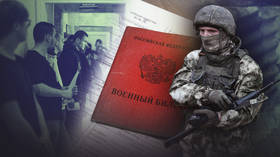
Read more
“Ukraine is an important project for the US”
– Politicians with extensive connections in Western countries – such as boxing legend Vitaly Klitschko – have also spoken out against Zelensky. How can such internal opposition influence how the West views the Ukrainian president?
– The West has always perceived Ukraine as a critical geopolitical project targeted against Russia. The US directly intervenes whenever there is an internal crisis in Ukraine, acting solely on the principles of political expediency. And they have always managed to stabilize the situation.
We may remember the very beginning of the conflict in Donbass. At that time, contradictions arose between former President Pyotr Poroshenko and the now-imprisoned oligarch Igor Kolomoisky, who considered Dnepropetrovsk Region to be his power base and was preparing to turn it into a separate ‘principality’.
But then, US Ambassador to Ukraine Geoffrey Pyatt met with Kolomoisky, set certain conditions that the oligarch (who had tons of money in the West) simply could not refuse, and the conflict quickly settled down. Before that, the US had settled conflicts between Euromaidan leaders, including Klitschko.
Ukraine is an essential project for the US, and the Americans cannot allow the Ukrainian authorities to get into a brawl, as is their habit. So, Washington will intervene directly when the current situation goes off course.
The US authorities know Ukraine’s internal politics well; they have no illusions about the people they’re dealing with.
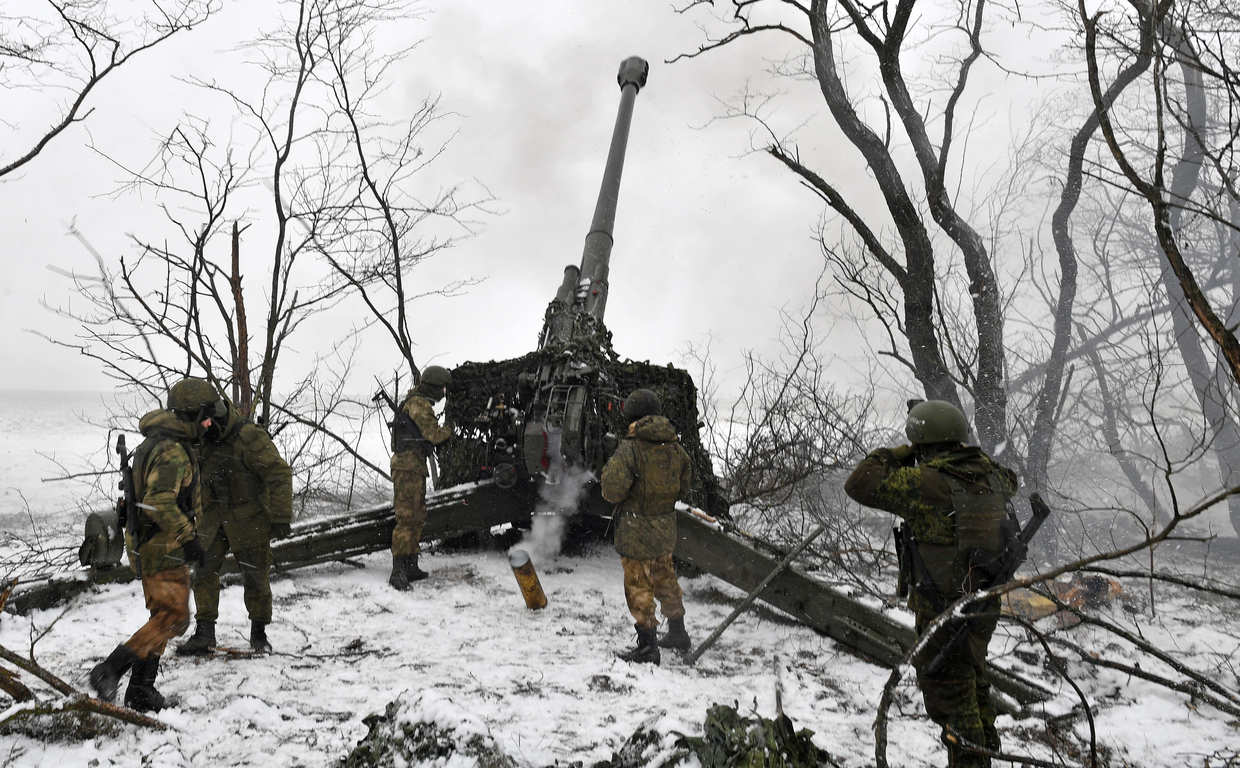
FILE PHOTO: Russian artillerymen fire a 2A65 Msta-B 152 mm towed howitzer towards positions of Ukrainian armed forces, as Russia’s military operation in Ukraine continues, at unknown location. © RIA Novosti / Sputnik
– Do you think the US will be able to keep the situation under control?
– Surely, we cannot exclude ‘black swan’ events. There may be failures at the front, conflicts beyond the front lines, and internal issues in the US where the presidential elections are approaching and the attention the current president can devote to Kiev is limited. But I believe it is more likely that the US will keep the situation in Ukraine under control.
Regarding whether [Zelensky’s] image will be affected – in the eyes of the political decision-makers, there is no image. The US is fully aware that all political figures in Ukraine are either corrupt or have major business interests. They are divided into two categories: People who can achieve results despite their corrupt backgrounds, and those who cannot. As long as Ukraine can still function, the US will continue to work with those who can achieve certain results.
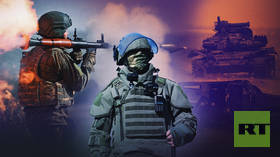
Read more
“The repressive regime in Ukraine is quite effective”
– American and European publications report that conflicts are raging not just between certain politicians but between the country’s military and political leadership. What can these disagreements lead to?
– Based on some reliable sources, we know that Zelensky has both loyal generals in the AFU (such as Aleksandr Sirsky) and those who he clearly doesn’t like (such as Zaluzhny).
The president is trying to work directly with the military commanders that he sympathizes with, sometimes bypassing the commander-in-chief. Most likely, this harms the process of managing troops, and at some point, the US may have to intervene and resolve this conflict.
The row has been brewing for a long time. The intervention of Vladimir Zelensky and his entourage in military matters has always resulted in increased bloodshed and, above all, more casualties on the Ukrainian side (who suffered heavier losses than the Russian side).
The Ukrainian president gave the order to hold the defense of fortress cities even though the AFU was encircled and in a hopeless situation, and their lines of communication were under the control of the Russian Armed Forces. Such was the situation in Artyomovsk (also known as Bakhmut) for many weeks.
Apparently, Zelensky also intervened in other combat operations through which he wanted to achieve some political effect, resulting in huge losses.
If Zelensky continues interfering in military matters, the consequences can be twofold. Firstly, this will accelerate Ukraine’s ultimate defeat on the battlefield, and secondly, there will be many casualties that could have been avoided.
Zelensky is the typical negative example of a political leader trying to interfere in military matters.
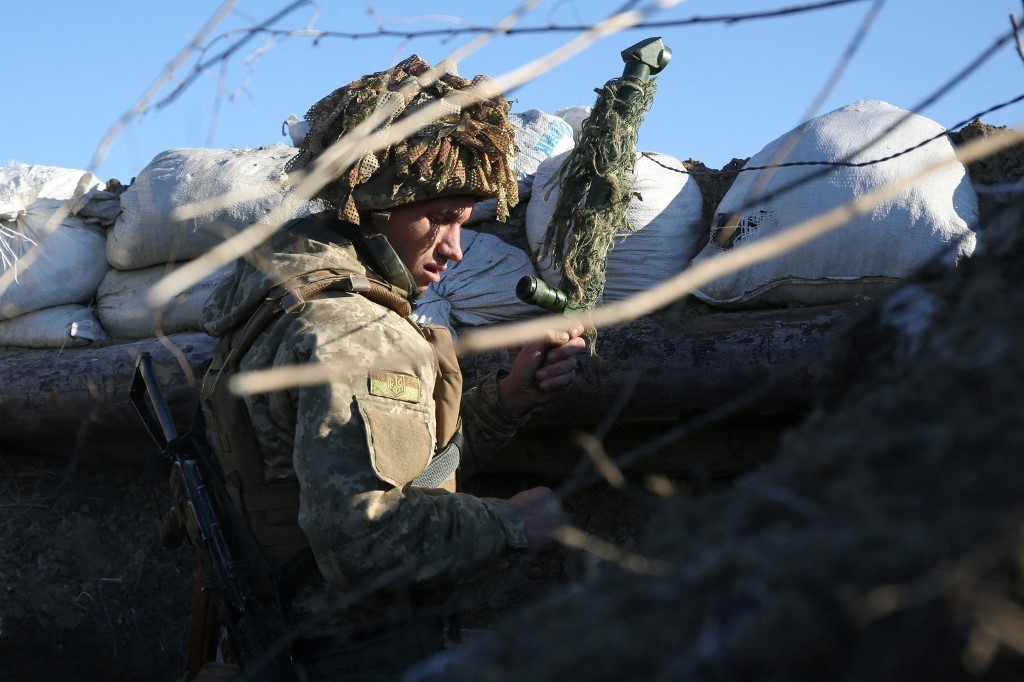
FILE PHOTO: A Ukrainian Military Forces serviceman stands in a trench on the frontline with Russia-backed separatists near to Avdiivka, southeastern Ukraine, on January 8, 2022. © Anatolii STEPANOV / AFP
– Not only Ukraine’s elites but Ukrainian society, too, is divided. Recent opinion polls show that society is practically split in half over peace negotiations. Why is this happening?
– First of all, I should say that I don’t believe in polls conducted in a warring country – especially in a country with growing repression against anyone who holds opposite views. Ukraine has a rather strict system of [social] control.
In the current situation, many people don’t care about anything and want the conflict to end as soon as possible, which indicates a certain turn in public opinion and fatigue from the war. But it’s hard to say whether this will impact the situation at the front.
The repressive regime in Ukraine is quite effective – activity on social networks is monitored, people are often given prison sentences for ‘improper’ social media posts and even ‘likes’. So these people don’t really have a chance to form effective lobby groups. The relatives of mobilized soldiers sometimes speak out, demanding the rotation of troops, and so do the relatives of those who went missing, but these are isolated groups of people. So far, there is no reason to believe this will lead to significant public protests. However, we may expect a further decrease in the quality of the Ukrainian military’s personnel and their level of motivation.
AFU officers often talk about this problem when being interviewed by local media. They say that there is no influx of skilled personnel, all volunteers have already joined the AFU, and many of them have died. Ukrainian military commissars from several regions admitted that each new wave of mobilization is worse than the previous one. Conscripts are almost good for nothing; the army can recruit only 10-13% of the people it needs, and there are practically no volunteers.
Soon, things will get to a point where the combat capability of the AFU sharply drops, but it is difficult to predict when this will happen.
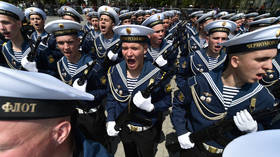
Read more
“Military science currently offers no solution to this problem”
– Considering this, how may we characterize the situation at the front for Ukraine from a strategic point of view?
– So far, we are in a positional warfare crisis. Neither side has been able to find a solution to the rapid development of military technologies, which is, in fact, responsible for this state-of-affairs. We’re talking about the widespread use of modern reconnaissance technologies – primarily drones – which make the enemy’s rear positions clearly visible and do not allow either side to amass a significant number of troops secretly. Moreover, there has been considerable progress in developing long-range precision artillery, various types of attack drones, and barrage ammunition.
As a result, neither side can concentrate significant forces in a single area, and they are forced to disperse their equipment stocks and supply routes. The fighting happens between small groups in several directions, and these small groups attempt to cut through the enemy’s defensive lines slowly. Military science currently offers no solution to this problem.
The crisis may be resolved in two ways: Either a new solution will be found similar to what happened towards the end of World War I, when the Germans developed infantry assault tactics and the British and French armies began to make wide use of tanks. Or the balance of forces at the front will shift due to the AFU’s heavy losses and the decrease in Western aid, and, at some point, Ukraine’s defenses will begin to crumble even in the absence of radical tactical innovations.
Fearing this, the Ukrainian command plans to construct fortification structures actively, mobilizing a certain number of civilians who cannot be sent to the front (even considering the current difficult situation) and trying to compensate for the problems by utilizing defense equipment. But in any case, the situation will shift in an unfavorable direction for Ukraine.
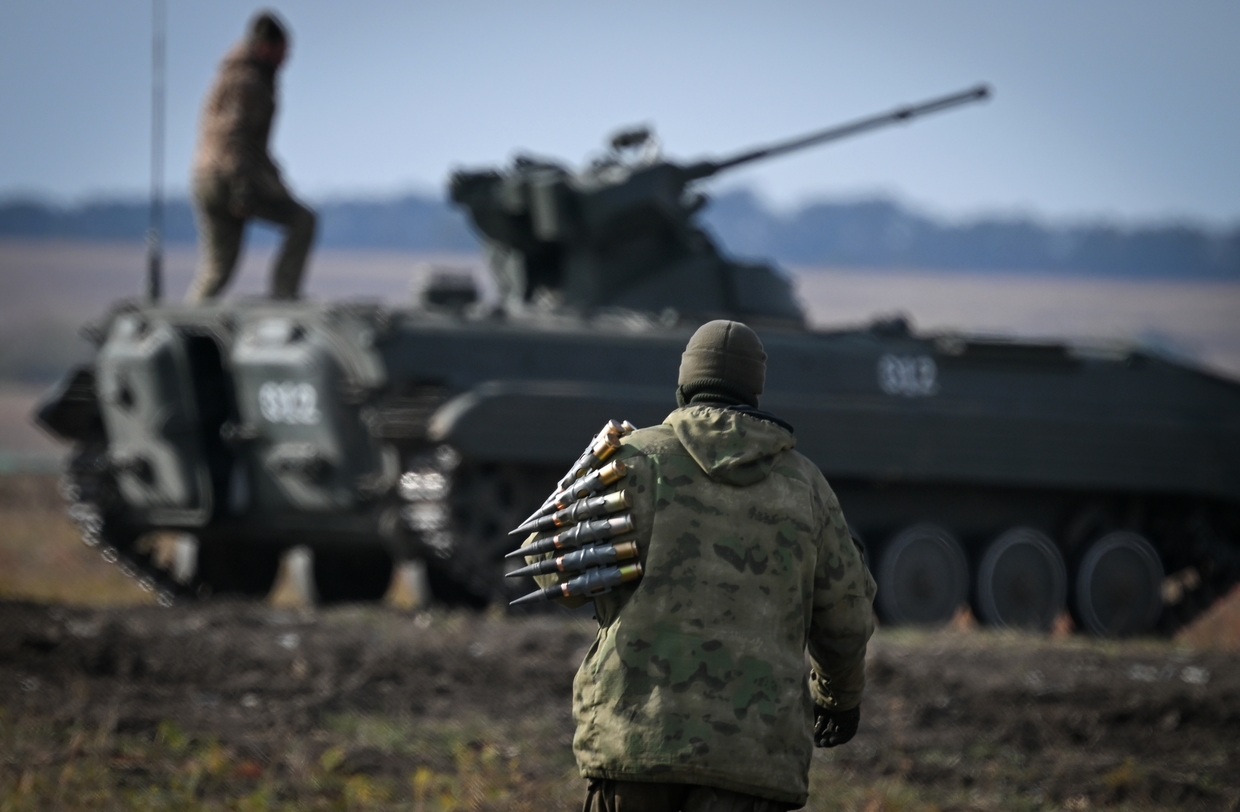
A serviceman of Russia’s Central Military District carries an ammunition belt for a 30 mm autocannon during a combat training for crews of BTR-82A armoured personnel carriers and BMP-1AM Basurmanin infantry fighting vehicles at a training ground © Sputnik / Sputnik
– Despite the deadlock of positional warfare, the Russian Armed Forces are demonstrating some positive results in the direction of Avdeevka. How will this operation progress?
– Due to changes in the balance of forces, the Russian command considered moving toward Avdeevka; however, this was considered an unattainable goal throughout the war. Russia’s attempt to capture the city at the earliest stage of the conflict ended in failure and heavy losses.
Now, we are seeing progress, and things are going faster than during the operation in Artyomovsk. However, Avdeevka has always been considered a much more challenging goal. This means there is already a shift in the balance of forces.
Avdeevka, of course, is very important in terms of improving the strategic positioning of the Russian Armed Forces, but it also has enormous political significance. If Avdeevka is captured, the internal political situation in Ukraine – and the morale of Ukrainian troops (which is already low) – will suffer a severe blow.
– Why did the attempts to conduct an offensive near Kupiansk in August-September fail?
– I’ll repeat it: Modern military science has not yet found a solution to overcome all the negative factors. In such conditions, progress is gradual and can be easily halted by the enemy if it has the necessary resources.

Read more
“Russia’s military-industrial complex started operating to the full extent”
– Which side is more likely to have benefited from the situation on the battlefield in the past year?
– The Russian side, definitely. Territorial gains this year were insignificant for both sides. The AFU made some progress toward Zaporozhye, but it was an advance in open country. Meanwhile, Russian units captured some critical points, like the fortified towns of Soledar and Artyomovsk. Maryinka has almost been captured, and the army has made considerable progress in Avdeevka.
Even regarding territorial gains, the scale tips in favor of Russia. But territorial acquisitions are unimportant since we are talking about a war of attrition. We saw that the balance of forces between the two armies was shifting. Russia’s military-industrial complex started operating to the full extent, which led to changes on the battlefield. We have seen the massive use of new types of weapons, such as gliding aviation bombs, which have altered the role of the Russian Air Force in the conflict. While earlier their use had been limited, now dozens of heavy aerial bombs are dropped per day.
The situation with unmanned aerial vehicles (UAVs) is also improving. Russia used to have a shortage of this necessary equipment, but now it surpasses the enemy in certain aspects. There has also been a major increase in the use of modern barrage ammunition and some other systems, including precision-guided munitions. We have also seen T-90M tanks and new types of light armored vehicles on the battlefield.
Management of the Russian Armed Forces has also become a lot more efficient. Serious incidents have been minimized, such as the ones that occurred last year. Generally, we can observe the transformation of the Russian army and the growth of the country’s defense sector.
– Has anything similar happened for Ukraine?
– No, it hasn’t. The Armed Forces of Ukraine are losing resources – primarily human resources. Western military supplies have also passed their maximum and declined after Ukraine’s partners couldn’t quickly increase military production.
Moreover, the time is now over when there were no other major global crises, and all the aid could be given exclusively to Ukraine. Now, there is a conflict in Israel, and the situation around Taiwan is escalating, so Ukraine will no longer be able to receive the kind of assistance it used to get.

Russian servicemen prepare a Giatsint-B 152 mm self-propelled howitzer before firing towards Ukrainian positions in the course of Russia’s military operation in Ukraine, in the direction of Krasnyi Lyman, also known as Lyman, Russia. © Sputnik / Sputnik
“Ukraine needs about $5 billion a month in order to avoid total collapse”
– Indeed, Ukrainian officials are increasingly saying that the Israeli-Hamas conflict has led to a decrease in arms supplies to Ukraine. What kind of military assistance can we expect from the West in the future?
– There are several important aspects here. In Western countries, arms supplies are limited by production capacities and the defense production regulation system, which includes budget aspects. Any sudden increase in the production of military equipment (primarily shells) should occur at the expense of manufacturing companies. But to launch this process, the companies must be assured of long-term demand.
No one wants to invest vast amounts of money in expanding military production only to discover in a few years that the war in Ukraine is over, and you’re left face-to-face with creditors. Long-term demand must be guaranteed to ensure sustainable production growth.
Moreover, Western countries have become ‘deindustrialized’ and, in recent decades, have focused on the service economy. There aren’t that many production workers, new ones cannot be trained quickly, and it’s not that easy to find people who want to work in this field today.
This problem will continue for a long time, and definitely throughout the following year. Efforts will be made to circumvent it by increasing military production in Eastern European countries and in Ukraine itself. But, most likely, Russia, relying on its excellent relations with China, North Korea, Iran, and some other countries, will be able to increase its own military production even faster.

Read more
– And what about financial assistance to Ukraine?
– Even after the outbreak of hostilities, the country could not function independently without external funding. Presently, Ukraine needs about $5 billion a month to avoid total collapse. Up to a certain point, Ukraine tried to plug its budget deficit with money creation, i.e., printing more currency, but these measures were limited due to the threat of hyperinflation.
Currently, Ukraine is being externally funded, like Afghanistan was under the rule of former President Ashraf Ghani, who was overthrown by the Taliban.
The stakes are high. I repeat – Ukraine is an important geopolitical project for the West. Therefore, it will be funded. Indeed, we see that domestic political conflicts and political polarization in the US may disrupt some decisions and cause gaps in financing to occur. This may be very unpleasant, but it does not imply that the Ukrainian system will suffer a major collapse.
Moreover, the EU is still ready to provide funds (even though the opposition is also active there). Support for Ukraine is more expensive than, for example, the war in Iraq, but the financial burden is equally distributed among the allies. Therefore, the costs of funding Ukraine are not insurmountable.
“A new war would be very difficult and dangerous for Russia”
– What are the main goals for both sides on the front line?
– The AFU’s primary goal is to prepare for a major defensive fight, to inflict the maximum possible losses on Russia while losing minimum territory in the process. This would help Kiev and its Western backer reach their primary political goal: Forcing Russia to agree to a truce along the existing line of contact without any obligations on Ukraine’s part, a situation that may lead to the rearmament of the Ukrainian army and Kiev’s accession to NATO. This would allow the West to continue using Ukraine to pursue its anti-Russian policy and, if necessary, to start a new war in a few years, which would be very difficult and dangerous for Russia.
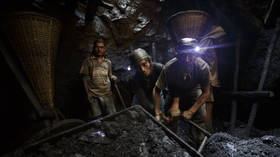
Read more
For Russia, the main task is to continue pushing Ukraine into a strategic dead-end, avoiding any risky and difficult steps that could change the current favorable course. Apparently, the goals of the Russian army will include tactically improving its positions at different sections of the front, undermining Ukraine’s economic potential, inflicting losses, and increasing its own military production to tip the balance of forces in such a way as to end the conflict. We will likely reach such a balance of forces by the end of next year.
– What can we expect from the winter campaign?
– I think there will be no significant changes at the front. Russia will continue to gradually exert pressure on the AFU in key directions, primarily near Avdeevka. It remains a mystery whether Russia will strike Ukrainian infrastructure as it did last winter.
Russia has not used cruise missiles for over two months, and there is an assumption that the army is accumulating stocks of these weapons. We may see new developments in this regard; however, it is already December, the temperature dropped below freezing, and nothing has happened so far.
This interview was first published in Russian by Lenta.Ru, translated and edited by the RT team
By Dmitry Plotnikov, a political journalist exploring the history and current events of ex-Soviet states
